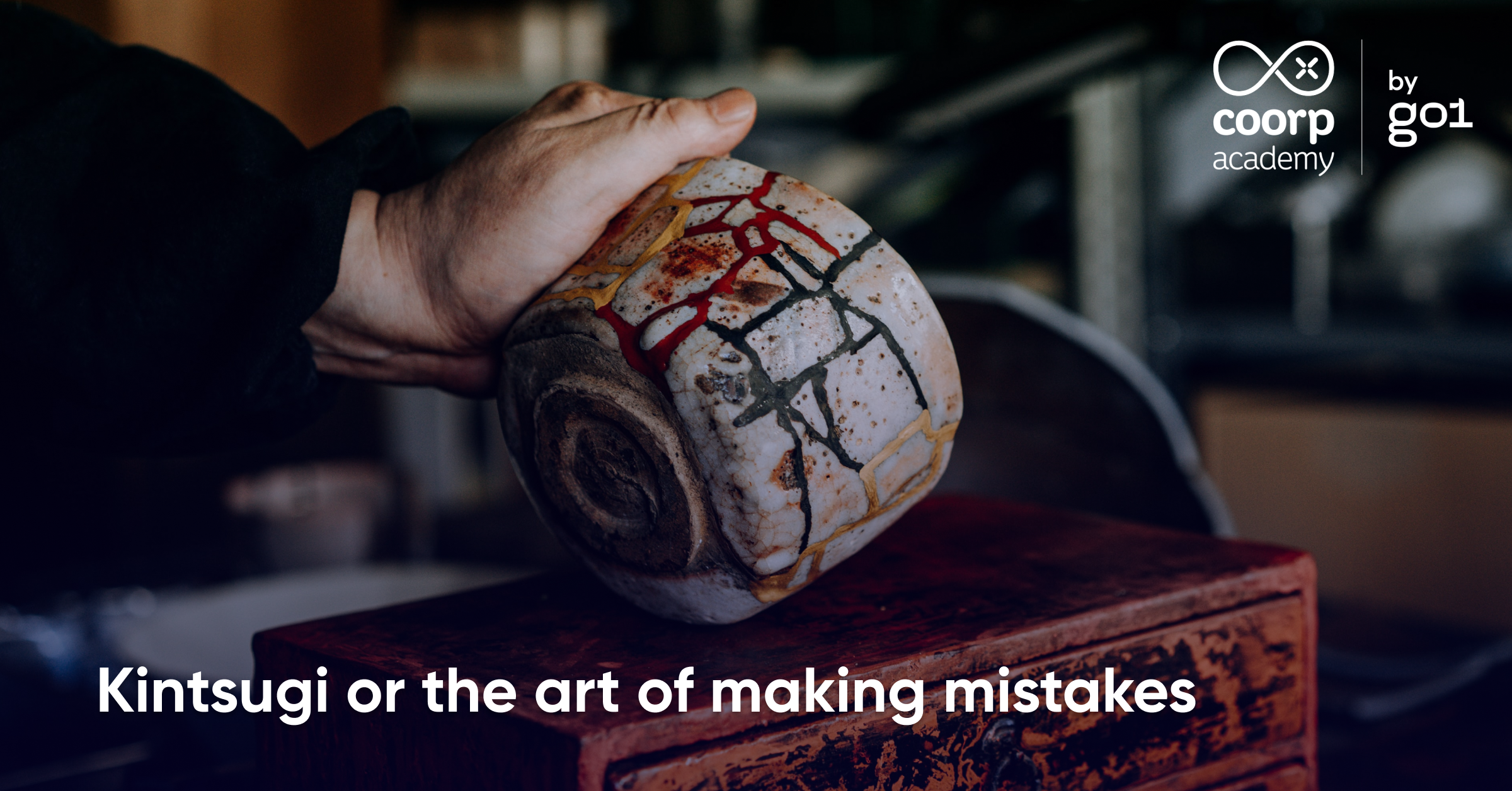Kintsugi or the art of making mistakes
Learning Innovation

Make mistakes. Blunder. That’s how you learn, and how you improve. Indeed, making mistakes is an integral part of any career and business life. While it is common to make mistakes at work, it is not often advisable to brag about them. And yet, it is always possible to make up for our mistakes. We didn’t invent this philosophy… It is directly inspired by Kintsugi (金継ぎ), a Japanese technique for repairing damaged porcelain and ceramics.
Kintsugi is an ancestral art that appeared in the Japanese archipelago in the 16th century. Its name comes from the contraction of kin (gold) and tsugi (joints). A true metaphor for resilience, Kintsugi consists of repairing objects by sublimating them with gold powder. The technique highlights cracks by making them aesthetically pleasing, rather than masking them. It strengthens and repairs, while enhancing the object. This art, both decorative and spiritual, can then be applied as a philosophy to everyday life, to assume who we are, with our flaws and our wounds.
So, let’s follow the 5 steps of Kintsugi together and see what lessons we can learn about accepting mistakes in business!
1- Putting the pieces back together
The first stage of Kintsugi consists of recovering the pieces of the object to be repaired in order to assemble them later using a putty obtained by mixing a lacquer (urushi) and a clay powder.
This first step, transposed to the case of the company, is the moment when the mistake was made. You become aware of the mistake, its internal and external consequences and you gather your strength for the next steps. As the expression goes: you will have to pick up the pieces. The pieces that have fallen apart because of your mistake. So, informing the people involved and expressing your regret will be the best way to start your Kintsugi.
2- Let time do the work
This ancestral Japanese art requires time. Indeed, after having gathered the pieces and delicately applied the resulting putty on the broken pieces in order to glue them back together, it is time to wait for the object to dry and for the resin to harden.
This drying phase is often compared to a healing process in the Kintsugi philosophy. The object takes time to rebuild, and so do you. After a mistake, time is often an ally. In the heat of the moment, you have not yet had time to heal and therefore to learn from your mistake. This healing phase will allow you to analyse what the mistake has shown about your skills or revealed about your situation.
3- Getting off to a good start
The third phase of Kintsugi consists of polishing the ceramics to remove any roughness or irregularities. A thin layer of lacquer should then be applied with a brush directly to the cracks, and finally, you should wait a few weeks for it to dry.
This phase, which comes just after the healing phase, may represent the mourning you have done for the past mistake. In effect, you are erasing the rough edges of your mistake, and you can now start afresh. You can refocus on the present, better prepare for the future and prevent possible mistakes from occurring.
4- Revealing the beauty of cracks
This is the moment we have been waiting for. The stage that brings out the beauty and delicacy of the flaws. The flaws are revealed by the gold powder used to cover and enhance them.
Now that the mistake is behind you and you can see more clearly, you can finally learn from it and appreciate the lessons. You fully recognise your skills and the reasons for your mistake, without trying to hide your shortcomings. You are stronger because the mistake is no longer a “roadblock” but a crucial event in your career, which taught you about yourself and your work.
5- Cultivating the art of imperfection
Finally, the last step is to polish the gold lacquered patterns to reveal their brilliance. However, it is advisable to leave a few defects on purpose to give relief, but also to assume the cracks and not to try to make the object “perfect”.
Perfection does not exist. It is a trap that can end up hampering your productivity. It is crucial to cultivate your new philosophy and accept that mistakes will happen. Learn to appreciate the small imperfections of life, personal or professional.
Accept imperfections, mistakes and sublimate flaws. This is the lesson that the art of Kintsugi teaches us. This philosophy allows us to be more peaceful and ready to deal with life’s irregularities and uncertainty. In today’s world, it is important to develop this state of mind, as many unforeseen events are paradoxically to be expected. Thus, working on the way one experiences difficult situations and conceives problems is crucial. If you approach a problem by being defensive and imagining the worst, it is likely to complicate its resolution. This is where training comes in. By developing essential soft skills such as coping, problem solving and resilience, we prepare ourselves for the uncertainties of the future. Finally, the art of Kintsugi also teaches us to detach ourselves from the passage of time, and to accept the change that is part of life, and of us. In an ever-changing world, this is perhaps the best lesson to learn.


